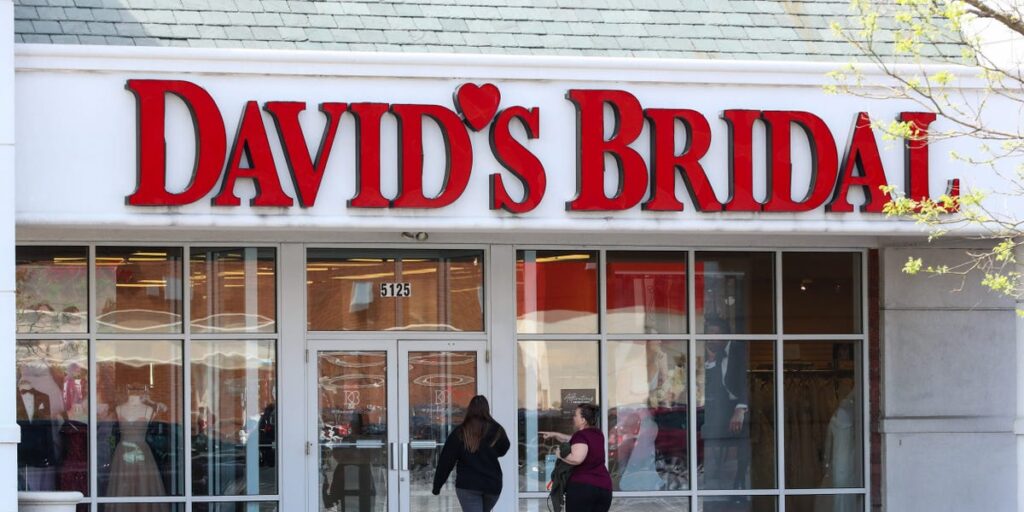The largest bridal retailer in the US started shifting its production out of China months ago in anticipation of the Trump administration’s tariffs.
David’s Bridal CEO Kelly Cook told Business Insider the company was not “tariff-proof” but “tariff-resilient” going into April, when President Donald Trump’s latest tariff push sent companies around the world scrambling and financial markets tanking.
Cook, who took over as CEO on April 1, said the company has 36 design and production facilities around the world, including in China, Sri Lanka, Vietnam, the Philippines, Myanmar, and India. That diversified production allowed the company to proactively respond to potential tariffs.
By the time Trump announced a 145% tariff on goods from China last week, the company had already largely shifted production to its facilities elsewhere.
Cook said that over the past few months the company decreased its China-based production from over 50% of its total to about 30%, a move that was possible due to the production that was already ongoing in other countries.
“We want to do everything in our power not to pass anything on to the customer,” Cook said, adding that as of last week, David’s Bridal had not raised prices as a result of tariffs.
The majority of bridal gowns sold in the US are produced in China, making the industry highly susceptible to the impacts of Trump’s trade war. Independent bridal shops recently told BI that about 90% of their gowns were made in China and that, in some cases, wholesale wedding dress prices were already rising as a result of tariffs.
The average wedding dress sold in the US retails for around $2,000 according to wedding planning website The Knot, so the steep tariffs on China could result in brides or bridal shops being hit with a hefty additional cost. And for couples getting married, that increase would be on top of the average cost of a wedding in the US, which The Knot puts at $33,000.
In addition to moving its own production out of China, David’s Bridal is also helping some of the manufacturers it partners with move their operations out of the country and to some of its other facilities.
Cook said the company also has about 300,000 gowns already state-side in its 193 stores located throughout the US, so they wouldn’t be subject to tariffs.
“We are very focused on ensuring that that level of inventory stays voluminous so we can anticipate needs like this,” she said.
Cook added that with so much uncertainty around tariffs, David’s Bridal is focusing on the factors it can control — “optimizing, looking at cost controls, moving production,” she said. “We’ll just continue to stay focused on that until the dust settles on all of the tariffs.”
David’s Bridal is also exploring the possibility of producing gowns in the US. Cook said the company is visiting a potential manufacturing location in June to evaluate if production could occur stateside.
The National Bridal Retailers Association, which represents about 6,000 independent bridal shops, recently told BI that the US does not currently have the infrastructure to produce the quality of dresses at scale that can be produced in China.
“There’s no doubt that we can find the labor and the talent in the US to do the same thing,” Cook said. “It’s about timing and location and other economic factors like capital and so forth that we will evaluate.”

